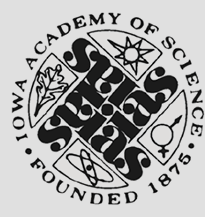Home > Iowa Academy of Science > Journals & Newsletters > Iowa Science Teachers Journal > Volume 14 > Number 3 (1977)
Document Type
Article
Abstract
Students have learned that when heat energy is added to any substance the temperature of this substance increases and, conversely, when heat energy escapes from the substance the temperature decreases. Based upon this concept, the idea of the heat of fusion of ice does not make sense. The idea that each gram of ice a 0° C can absorb 80 calories of heat energy and become a gram of water with the temperature still 0°C does not seem logical. The student may accept the “if you say so" approach, but some meaningful laboratory data will be more convincing. The usual laboratory procedure for measuring the heat of fusion involves starting with a measured quantity of water in a double walled calorimeter. Pieces of ice are dried with a paper towel and, hopefully before more of the ice can melt, are added to the water in the calorimeter. These pieces of ice are all owed to melt in the calorimeter. I have found that with this procedure the students become lost in the maze of measurements and calculations. When the investigation has been completed, they are not sure what they have discovered. Also, the results are usually so poor that the experiment becomes a discouraging experience. My physics students have obtained surprisingly good results with the "ice calorimeter" procedure for measuring the heat of fusion of ice. The results are usually within one or two calories per gram when compared with the accepted value. Also, the simplicity of the measurements and calculations make it possible for the students to understand what they are doing. The results are meaningful to the students.
Publication Date
December 1977
Journal Title
Iowa Science Teachers Journal
Volume
14
Issue
3
First Page
14
Last Page
16
Copyright
© Copyright 1977 by the Iowa Academy of Science
Language
en
File Format
application/pdf
Recommended Citation
Gohman, Walter J.
(1977)
"The Heat of Fusion of Ice,"
Iowa Science Teachers Journal: Vol. 14:
No.
3, Article 7.
Available at:
https://scholarworks.uni.edu/istj/vol14/iss3/7

